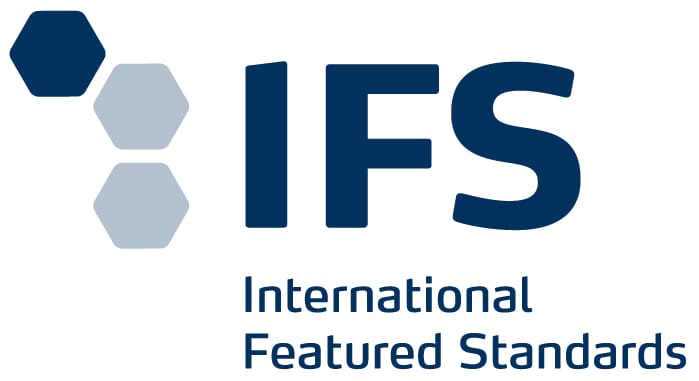TRIMAGNESIUM DICITRATE
AS FOOD ADDITIVE
What is trimagnesium dicitrate?
Trimagnesium dicitrate, anhydrous, is a chemical compound that has long been used for the magnesium fortification of food supplements and foods. It is also known as tri-magnesium citrate, magnesium citrate, tertiary magnesium citrate, tribasic magnesium citrate or neutral magnesium citrate.
The molecular formula is C12H10Mg3O14 and the molecular weight is 451.11 g/mol. Trimagnesium dicitrate is a white powder that is soluble in water and has a pH value of around 7. Trimagnesium dicitrate, anhydrous contains about 15 % magnesium.
From February 2024, trimagnesium dicitrate can also be used as a food additive with the E number “E 345 (i)” in food supplements in solid or chewable form to bind smaller amounts of residual water.
Name: Trimagnesium dicitrate, anhydrous; tertiary magnesium citrate; Tri-Magnesium citrate
Chemical formula: C12H10Mg3O14
Molar mass: 451.11 g/mol.
Magnesium concentration: approx. 15 %
E number: E 345 (i)
Why was an approval requested for trimagnesium dicitrate, anhydrous, as a food additive?
Food additives are substances that are deliberately added to foods in order to achieve certain technological or sensory properties, e.g. preservation, coloring, acidity regulation, stabilization or texture.
The application for and authorization of trimagnesium dicitrate, anhydrous as a food additive (also known as an E‑number) opens up new possibilities for the use of this mineral raw material within the European food supplement industry. On this basis, the free movement of supplements within the European Union will be facilitated.
The safety of food additives is tested, evaluated and thus ensured by the EFSA (European Food Safety Authority), among others.
From a consumer perspective, the advantage is that the use of trimagnesium dicitrate, anhydrous, in food supplements is now regulated. This means that labeling requirements, maximum quantities and special raw material properties relating to trimagnesium dicitrate, anhydrous must be complied with by manufacturers.
Which EU regulation defines the authorization of food additives?
The authorization of food additives in the European Union (EU) is governed by regulation (EC) No. 1333/2008 on food additives. This regulation lays down the conditions for the use of food additives in the EU and harmonizes the provisions in the Member States. The corresponding specification parameters are listed in the associated Regulation (EU) No. 231/2012.
What are the implications of its registration as a food additive?
When requesting a raw material as a food additive, the applicant also makes a specification proposal in which the chemical and, in some cases, physical properties of the raw material are listed. If an authorization is granted on the basis of these product specifications, all products on the market must meet these criteria in future if they are to be used for the areas of application applied for.
In addition to its use as a food additive, trimagnesium dicitrate, anhydrous, may also continue to be used for magnesium fortification of nutritional supplements and foods. The fortification regulations directive 2002/46/EC for nutritional supplements and regulation (EC) 1925/2008 for foods specify which purity criteria the minerals used must meet.
Prior to the authorization of trimagnesium dicitrate, anhydrous, as food additive, qualities with purity criteria recommended by international boards could be used. But as a result of the approval, only trimagnesium dicitrates, anhydrous, that meet the criteria below may be used in food supplements. This means that the food additive-quality for trimagnesium dicitrate, anhydrous, is mandatory for fortification from now on.
Other forms of magnesium citrate, such as tri-magnesium citrate 9‑hydrate or mono-magnesium citrate, are not affected.
Specification parameters of trimagnesium dicitrate, anhydrous E 345 (i)
| E number | E 345 (i) Trimagnesium Dicitrate |
| Synonyms | Magnesium citrate; Tri-Magnesium Citrate |
| Einecs | 222–093‑9 |
| Chemical name | Trimagnesium bis (2‑hydroxypropane‑1,2,3‑tricarboxylate), anhydrous |
| Chemical formula | (C6H5O7)2Mg3 |
| Molecular weight | 451.12 (anhydrous) |
| Assay | 15.0–16.5 % Mg on dry substances/matter equals 92.8–102.1 % trimagnesium dicitrate, anhydrous |
| Description | White or almost white, fine, slightly hygroscopic powder |
| Appearance of a solution | No more opalescent than ref. susp. III and no more intensely colored than ref. sol. Y7 or BY6 |
| Test for Citrate | Positive |
| Test for Magnesium | Positive |
| pH value (5% solution) | 6.0–8.5 |
| Solubility | Soluble in water, practically insoluble in ethanol (96 %), it dissolves in dilute hydrochloric acid. |
| Particle size | By STEM method — median (D50) particle size (number-based) not below 130 nm; By laser diffraction method — median (D50) particle size (mass-based) not below 50 μm |
Trimagnesium Dicitrate from MAGNESIA as E 345 (i)
As a distributor of mineral raw materials, we can offer you a trimagnesium dicitrate that meets the criteria for food additive E 345 (i). You can therefore ensure magnesium fortification for your food supplements and foods in accordance with current regulations.
Trimagnesium dicitrate
Suitability as food additive E 345 (i)
For use in food and food supplements
From 20 kg
Readily available
Download product specifications
Trimagnesium Dicitrate
Contact us now
Christian Nega and the NEM team supports you with technical know-how and finds tailor-made solutions for your product idea.
Also ask for detailed information about specifications, safety data sheets or material samples.






